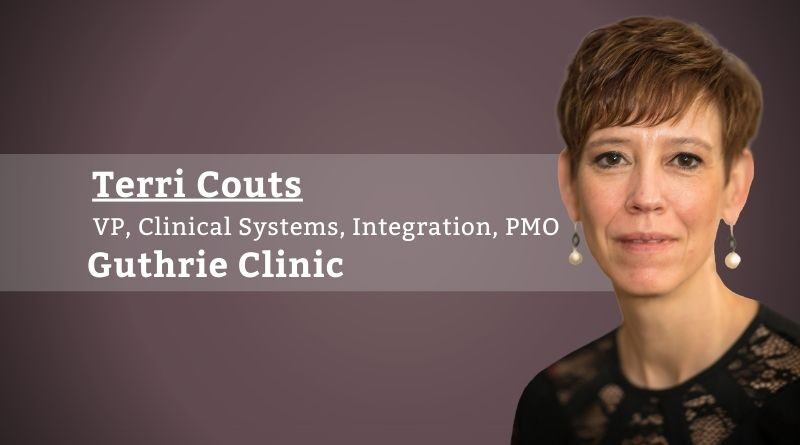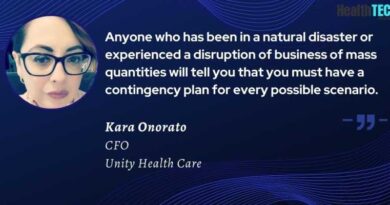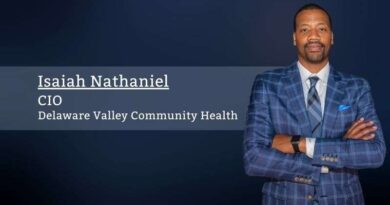Technology Enable Patient Experience: The New Strategic Goal
By Terri Couts RN-BC Informatics, MHA, CHCIO, VP, Clinical Systems, Integration, PMO, and Epic Applications Program, Guthrie Clinic
Over the last several years, it has been increasingly necessary for health care to be more agile in approach to healthcare IT delivery and even responsiveness to operational adjustments. The pandemic further highlighted this, and for health care providers who were not practicing agility, it may have even turned them upside-down. Regulatory bodies, and now even our patients, are expecting responsiveness to the needs of the changing environment at an even faster pace than in the past. If you are not keeping up with the changes, you will likely see the impact on your patient engagement and loyalty scores.
In the health care industry, we have quickly gone from scheduling an appointment online to having point-of-care telemedicine visits.
One would ask what the role of emerging technologies is in high patient loyalty scores. Long gone are the days where a patient goes to the provider office, waits as long as it takes to see him, receives handwritten prescriptions which then need to be taken to the pharmacy to be filled, gets a test ordered that requires someone to call you to schedule, wait weeks for another appointment to review the test results and finally, receive a paper bill in the mail that you then write a check to mail in to pay. There are few people out there who prefer the above method. Still, many are demanding quick access to care and additional conveniences that are often seen with technology implementation. In the health care industry, we have quickly gone from scheduling an appointment online to having point-of-care telemedicine visits. Patients see such transitions from having multiple portals to log into for tracking your care to using APIs (Application Programming Interface) for sending your data to whatever portal or smart app you want. The world is inundated with technology-driven access at your fingertips. Healthcare has been a little slow to adopt this, but patients are now demanding it.
Patients want the same experience that they have in the banking or airline world. They want to access when it is convenient for them. They also want that access not just limited to their care providers, but they also want access to their clinical data as soon as it is available. They are demanding streamlined workflows such as ordering meals when they are ready to eat and paying bills online to include having estimates before procedures to plan costs. They want to know what the prescription will cost them before they arrive at the pickup counter.
A exciting as it is, all of this new technology comes with many challenges for healthcare systems and providers. Many healthcare systems took the approach many years ago to implement the best of breed technology. This approach allowed each individual care area to have niche systems that did everything they needed for that care area. Although the technology was sound for the use case it was developed for, it is challenging to integrate seamlessly with other systems, often requiring complex workflows that compromise patient care. Many hospital systems have transitioned away from this approach but have not yet fully replaced the archaic systems with investing in a more integrated system. This transition can often require millions of capital funds and often gets put to the back burner due to other competing priorities for those capital dollars like a new MRI machine.
With the paradigm-shifting to technology-enabled patient engagement, another common challenge I am finding is not being sucked into the new shiny object twilight zone. Tech companies have jumped on the bandwagon, and every day, there is a new tool, app, system, or hardware that claims to be your life saver to your patient satisfaction issues. It is even more important than ever for healthcare systems to take a minute to access the complete continuum for making any of these new gadgets work. Technology is just one piece of the triad. They also need to include people and processes to ensure the hospital’s investment will be maximized and not collect dust like a new treadmill three months after it was purchased.
The COVID pandemic has further brought to the foreground how important technology-enabled care is. At my health system, technology helped us to continue the business. We increased our telemedicine footprint to all our practicing providers. We enabled screening for COVID patients through remote patient monitoring, and now we are using the same platforms to manage our COVID vaccination process. This last year has tested our ability to be agile in the healthcare setting. It forced out to roll out technology that we either were fearful of using or regulation prevented us from doing so. Now that it is out there, there is no going back. Our patients have a taste, and they will only continue to demand more.
The bottom line is that Patient Engagement is often one of the strategic goals that organizations are focusing on. If it is not, you have probably already missed the boat. It will challenge healthcare systems at all levels and particularly on how (or should I say how much) they invest in Information Technology. The investment needs include the right talent, the right systems, the right level of cybersecurity, and even more importantly, the right balance. With technology at their fingertips, patients now can shop for their care much as they would shopping for a new car. They are no longer bound by geographical boundaries and providers. Hospitals now need to work harder than ever to earn their loyalty.



